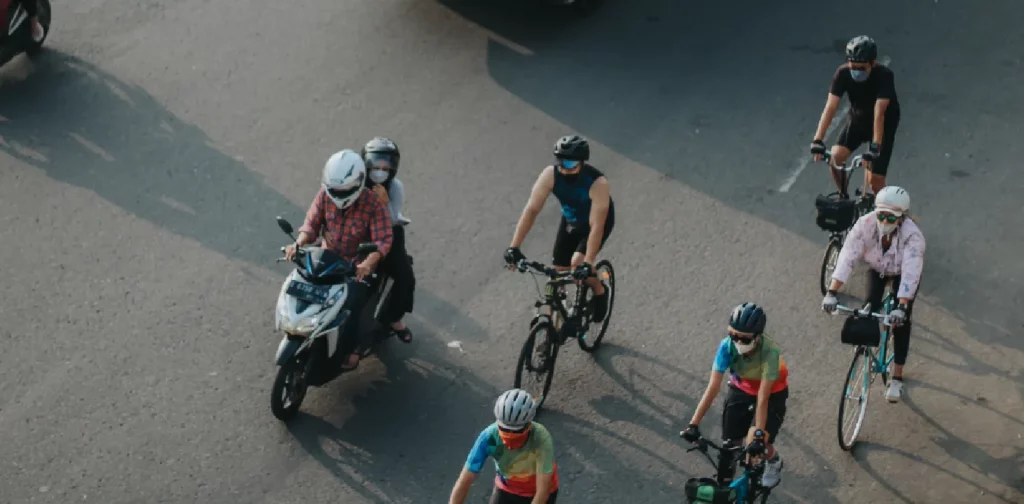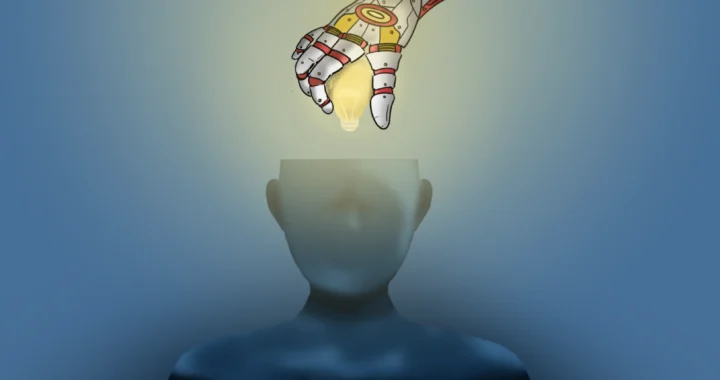Improving Safe Cycling Lanes for Sustainable Urban Mobility

Photo: Andri Aprianto on Unsplash.
What are the things that come to mind when talking about sustainable urban mobility? The first thing might be about public transport and how it allows mass and effective mobilization. The second thing might be electric vehicles and their potential to support decarbonization in the transport industry. What we often don’t talk about is using bicycles as a part of urban mobility.
Despite its low cost and health benefits, cycling isn’t the preferred means of transport for urban mobility for various reasons. Fast-paced lives, lack of safety, and limited proper infrastructure are some of the main reasons. Therefore, how can we improve sustainable urban mobility with bicycles?
Cycling: Opportunities and Obstacles
In 2021, the transport sector contributed 23% of the global greenhouse gas emissions. The sector is also the main culprit behind air and sound pollution, especially in urban areas. Air pollution is particularly detrimental to our health, causing around 4.2 million premature deaths annually.
As a means of transport, bicycles can bring us to work, schools, and healthcare facilities with little to no pollution. Moreover, cycling can benefit our health as a form of physical exercise. It can also help reduce congestion, enable easier and more flexible route navigation, reduce air pollution, and encourage healthier urban settlements.
Unfortunately, cycling can also be dangerous, even deadly. According to the World Health Organization (WHO), approximately 41,000 cyclists die annually due to road accidents. This number represents 3% of the global road traffic deaths. Furthermore, millions of other cyclists suffer from road traffic injuries and half of these injuries cause permanent disabilities. Unlike those who drive cars, cyclists have less protection on the road, making them prone to injuries even in minor accidents.
The shift from a high-emission mobility pattern to sustainable urban mobility is a part of the Sustainable Development Goal 11 target 11.2. In this case, promoting and prioritizing accessible bicycle usage is crucial. This will require policy support, interventions, and proper infrastructure that place the safety of cyclists at the center of road traffic safety.
Safe Cycling Lane
Several cities and countries have provided their citizens with lanes that allow them to cycle safely and conveniently. For example, Paris has redesigned its city by developing new cycling routes spanning over 650 kilometers. In Freiburg, Germany, an infrastructure system is designed to support safe cycling routes, making bicycles the most common means of transport in the city. In Southeast Asia, Singapore is also dubbed as a cycling-friendly country.
Still, increasing bicycle usage needs to go hand-in-hand with the efforts to improve cyclists’ safety. One of the strategies is to provide safe and convenient cycling lanes. To support this, public education regarding bicycle lanes and signs is crucial. The World Research Institute offers several strategies for designing safe cycling lanes in urban areas:
- Establish safe operational vehicle speeds for all urban streets.
- Design bike lanes to prioritize safety for cyclists and pedestrians, consider lane setup and protection, manage common conflict zones, and select appropriate materials.
- Manage and enforce regulations to protect bike lanes from common types of infringement, such as parking, delivery, and freight loading.
- Integrate cycling in broader city planning.
- Integrate bicycle lanes with motor vehicle facilities and strategic places.
Encouraging Sustainable Urban Mobility
Improving cyclists’ safety is crucial to encourage sustainable urban mobility. In this case, reducing risk is a precondition for implementing policies that support increasing the number of cyclists to achieve health, accessibility, and environmental benefits. A basic and comprehensive approach is required, including developing construction plans for road and bicycle paths and providing integrated transport systems that ensure fair and accessible usage for various modes of transportation.
Translator: Kresentia Madina
The original version of this article is published in Indonesian at Green Network Asia – Indonesia.

Join Green Network Asia Membership
Amidst today’s increasingly complex global challenges, equipping yourself, team, and communities with interdisciplinary and cross-sectoral insights on sustainability-related issues and sustainable development is no longer optional — it is a strategic necessity to stay ahead and stay relevant.
Join Now

 Weaving the Thread Between the Last Elephant and the Floods in Sumatra
Weaving the Thread Between the Last Elephant and the Floods in Sumatra  Prescribing Beyond Profit for CEOs’ Anxiety
Prescribing Beyond Profit for CEOs’ Anxiety  An Interview with May Tan-Mullins, CEO and Provost of University of Reading Malaysia
An Interview with May Tan-Mullins, CEO and Provost of University of Reading Malaysia  An Interview with Eu Chin Fen, CEO of Frasers Hospitality
An Interview with Eu Chin Fen, CEO of Frasers Hospitality  The UK Government’s Funding Package Plan to Tackle Youth Unemployment
The UK Government’s Funding Package Plan to Tackle Youth Unemployment  Understanding the Dark Side of Artificial Intelligence
Understanding the Dark Side of Artificial Intelligence